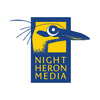|
Landing a spot on the New York Times' best seller list is tough--but it’s not impossible. Every aspiring writer knows that getting your story featured in the New York Times' best seller list is one of the greatest honors any book could achieve but getting your foot in the door can feel more like climbing Mount Everest than publishing a book. Getting on this prestigious list offers huge bragging rights for authors. To get an idea of the difficulty, a study showed that of 100,000 hardcover books published each year between 2008 and 2016, less than 500 of them made the list. A quarter of those books that managed to land in one of the 15 available slots only made an appearance for a week before dropping off. Overall, only about 37% of the chosen books manage to stay more than four weeks, while even fewer--about 8%-- snag the No.1 spot. Looking at that, it probably would be easier to climb Mount Everest! However, this doesn't mean you have no chance. While no one knows the full judging process that grants authors access to this selective list, here are a few tips that could improve your book's chances: Get Your Sales Up in a Week Book sales are the biggest aspect of getting on the New York Times' best seller list--for obvious reasons--but the velocity of these sales is the real key to getting noticed. If you want a realistic shot at getting on the list, you need to sell at least 5,000 to 10,000 copies within one week. The general rule of thumb is to sell at least 6,000 in fiction or 7,500 in nonfiction. So if you want to make the best seller list--sell. Diversify Sales However, it’s not enough just to sell over 6,000 books in a week. The New York Times also requires that sales be spread across America using a plethora of retailers such as Amazon, Barnes & Noble, Books-a-Million, independent bookstores, etc. Sales must be dispersed, rather than concentrated--so no buying your book in bulk off Amazon and calling it a day. That’s cheating, and they know it. Market and Build a Fanbase Building up your fanbase before you release your book is important, especially when you see that authors usually sell the most copies during the first weeks after launch. Fiction sales almost always peak within the first two to six weeks, while nonfiction usually peaks within the first fifteen. Your best course of action is to market your book before the release date and then be ready to sell in the heat of excitement of your book's release. Get the Timing Right Mind when you’re going to release. Depending on the season, the New York Times could require double the amount of sales. For example, while a fiction book might need to sell 5,000 copies during February, during the holiday season, you might need to sell 10,000 of the same book. Choosing a strategic release date will greatly impact your chances of landing a spot on the best seller list. Timing is everything! Armed with this new information, we at Night Heron Media wish you well in your writing endeavors!
0 Comments
Your comment will be posted after it is approved.
Leave a Reply. |
Categories
All
Archives
March 2022
|
|
Help preserve our history and share our stories through the book and media arts by making a tax-deductible donation today.
Night Heron Media is a 501(c)3 non-profit corporation registered in Texas.
|
Copyright © 2024 by Night Heron Media



 RSS Feed
RSS Feed